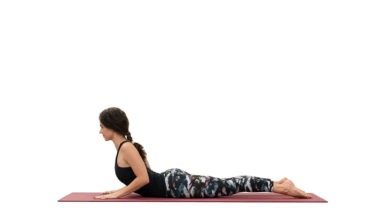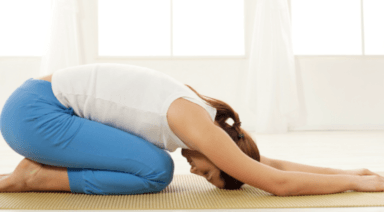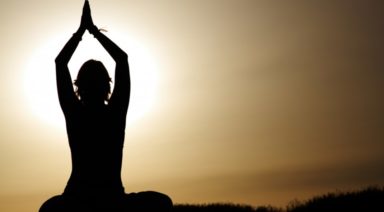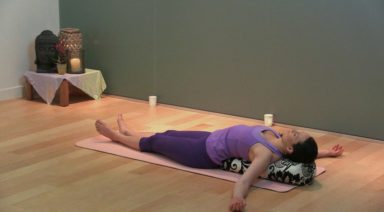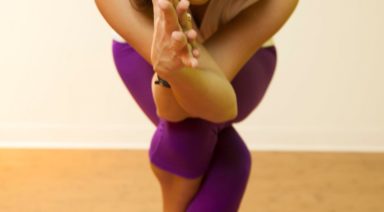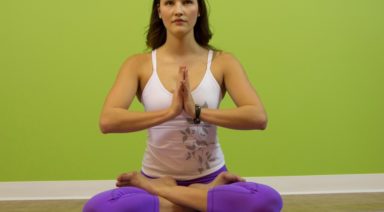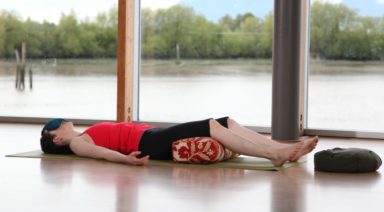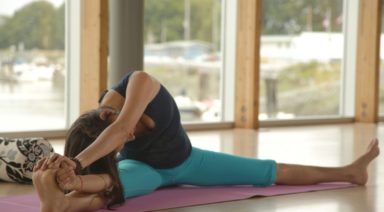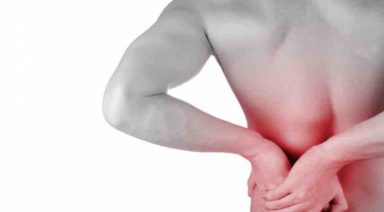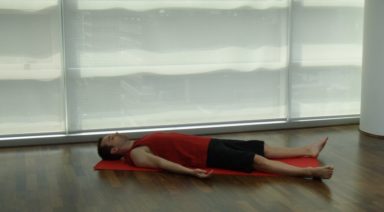Tadasana: Mountain Pose
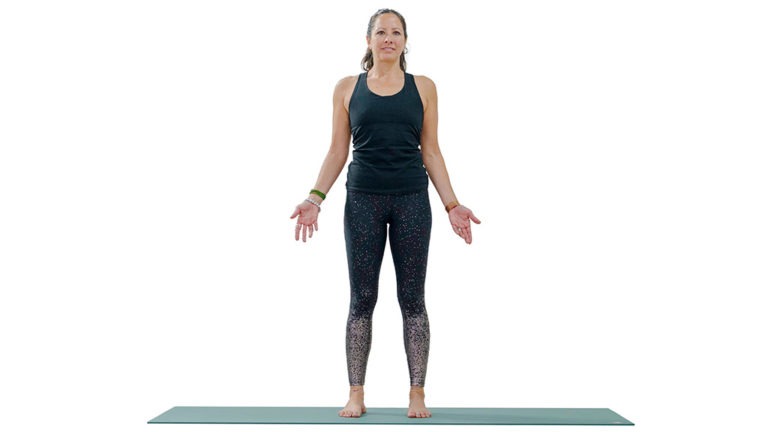
ADJUSTMENTS | BENEFITS | SEQUENCING | SANSKRIT | STEPS
While the tadasana (tah-DAHS-anna), or mountain pose, appears to be one of the most basic yoga poses, it is far more profound than it seems. Learning how to truly stand in mountain pose, with awareness from the top of the head to the bottom of the feet, brings benefits in practicing nearly every other yoga pose — especially standing poses. Understanding the ins and outs of tadasana gives the knowledge needed to move confidently and safely into your practice for years to come. Regularly practicing mountain pose is also great for improving posture.
Philosophy + Origin
Mountain pose can look like a “non-pose” to some, but there is much to discover. In an age where we move quickly from one thing to the next, learning how to be strong, steady, and unwavering like a mountain is beneficial for our mental, physical, and spiritual health. As you stand in mountain pose, notice the subtleties of the posture. What can be discovered by being still? The more you practice tadasana, the more you’ll experience its meditative qualities, each breath inviting another step up the proverbial mountain until you quietly take in the incredible vista from the top.
ADJUSTMENTS/MODIFICATIONS:
- Stand with your heels, hips, and shoulder blades against a wall as a guide for proper alignment.
- To learn to engage the leg muscles correctly, practice with a block between your thighs. Use your inner thigh muscles to squeeze the block and imagine you can push it behind you (internal rotation). This action is fundamental to many standing poses.
STEP-BY-STEP:
- Stand at the top of your mat with your ankles directly under your inner hip bones.
- Root down: Lift and spread your toes wide, then gently place them back down. Balance your weight between the four corners of your feet – the base of the big toe, the base of the pinky toe, the inner heel, and the outer heel.
- Internal rotation: Feel your inner thighs squeeze toward each other and back behind you.
- Neutral pelvis: Draw your tailbone down as you lift your pubic bone toward your belly.
- Broad shoulders: Widen your shoulder blades as you simultaneously draw them down. Lift your sternum to allow more space between your collarbones. Let your arms rest at your sides with palms facing forward.
- Feel the midline: Feel the crown of your head align with the center of your pelvis; align your chin so that it’s parallel to the mat.
PREPARATORY POSES:
- Standing forward bend | Uttanasana
- Plank pose | Phalakasana
- Upward salute | Urdhva hastasana
SEQUENTIAL POSES:
- Chair pose | Utkatasana
- Tree pose | Vrksasana
- Crescent lunge | Anjanayasana
COUNTER POSES:
- Standing forward fold | Uttanasana
- Half standing forward fold | Ardha uttanasana
- Downward facing dog | Adho mukha svanasana
SANSKRIT:
- Tada = mountain
- Asana = pose
PHYSICAL BENEFITS:
- Improves posture.
- Strengthens thighs, ankles, feet.
- Tones the muscles of the abdomen.
ENERGETIC BENEFITS:
- Calms the mind.
- Relaxes the central nervous system.
Legal Disclaimer Before participating in any exercise program or using any fitness products or services that may be described and/or made accessible in or through the Gaia Website and/or the Services, you should consult with a physician or other healthcare provider. Read more about Gaia’s Terms Of Use.
Bhujangasana: Cobra Pose

ADJUSTMENTS | BENEFITS | SEQUENCING | SANSKRIT | STEPS
Bhujangasana (boo-jang-GAHS-anna) is a great way to strengthen the upper back and is often practiced as part of a transition back to downward-facing dog in vinyasa yoga. Practicing cobra pose regularly can improve your lung capacity, reduce stress, and stimulate many of the internal organs in your body.
Philosophy + Origin
Although often perceived as evil or dangerous, snakes also have a rich history of power and worship. In some yoga traditions, the energy of kundalini is represented by a serpent resting coiled at the base of the spine. By awakening this snake, we enliven our body’s energy and create a pathway towards enlightenment. This connection with enlightenment is also seen in many portrayals of the Buddha where he is shown with a cobra over his head.
ADJUSTMENTS/MODIFICATIONS:
- Option to swap cobra pose for sphinx pose by placing your forearms on the floor.
- Lengthen the back of the neck to avoid straining the neck and upper back.
- If you experience discomfort in the lower back, bend the elbows more.



